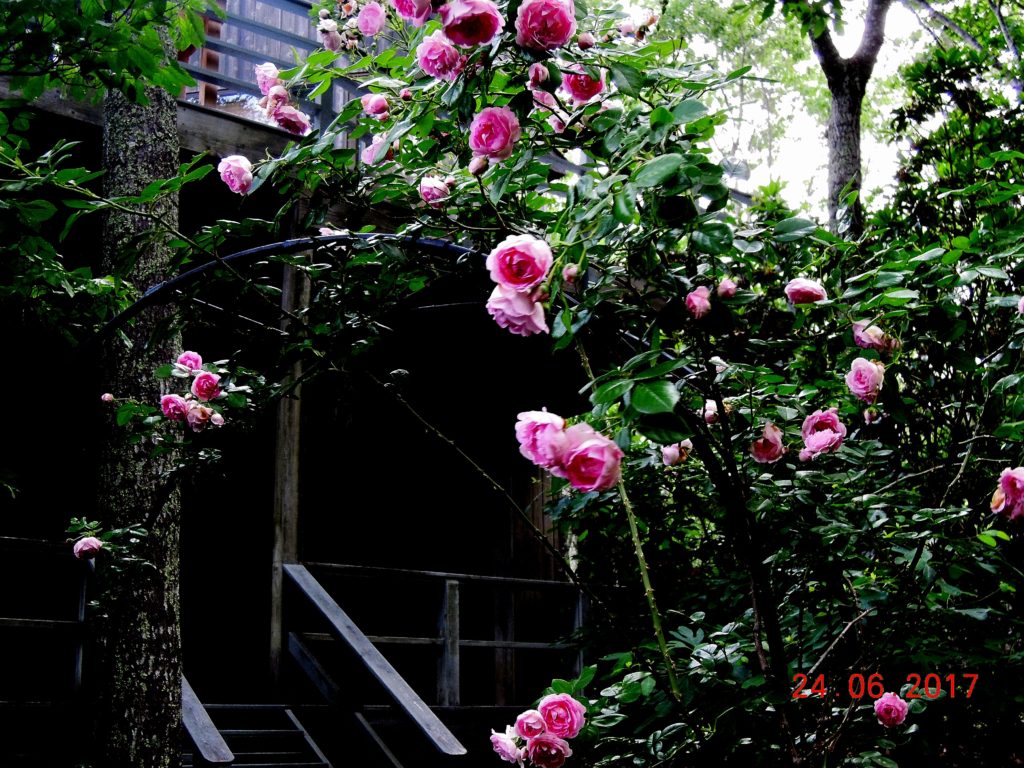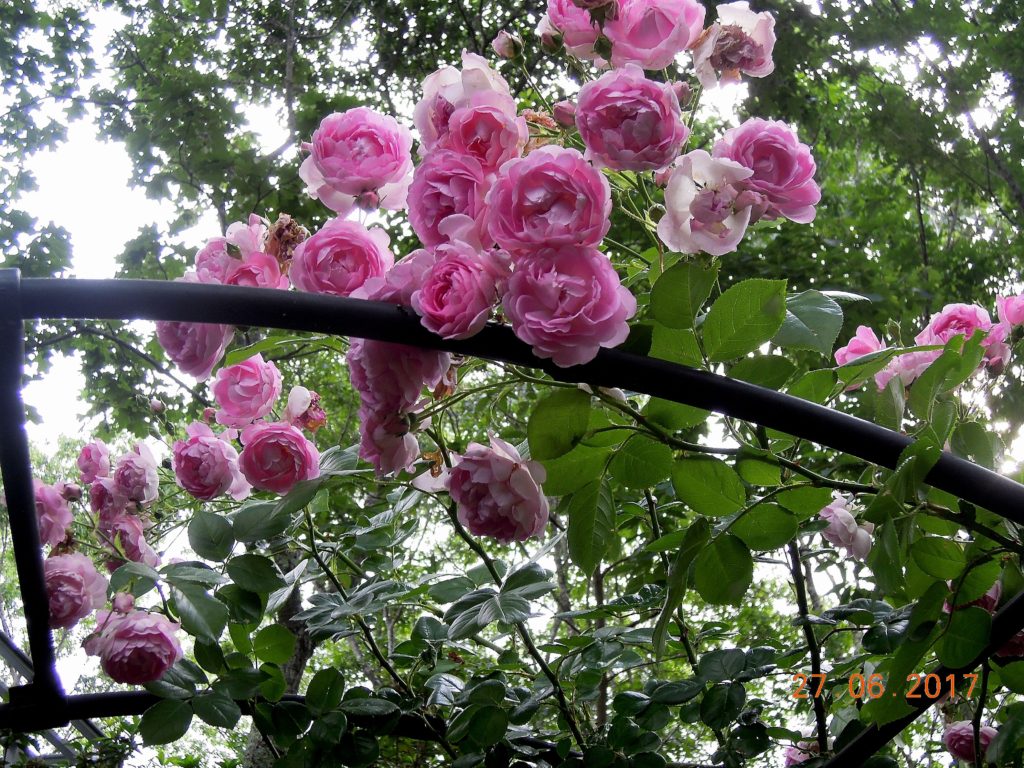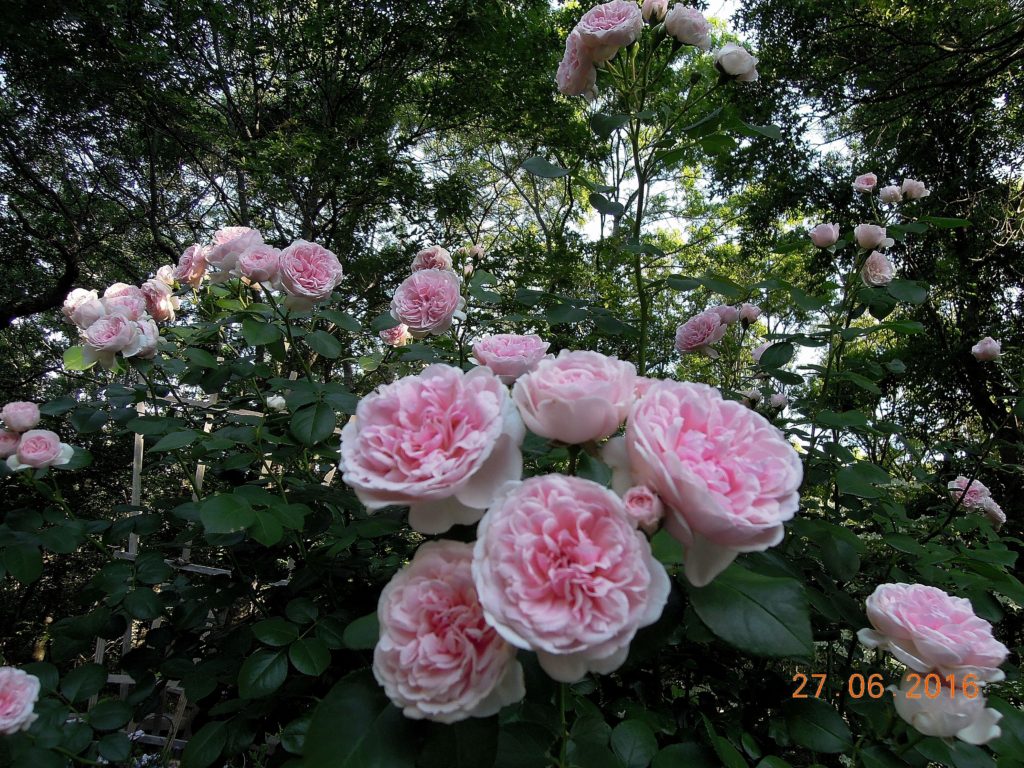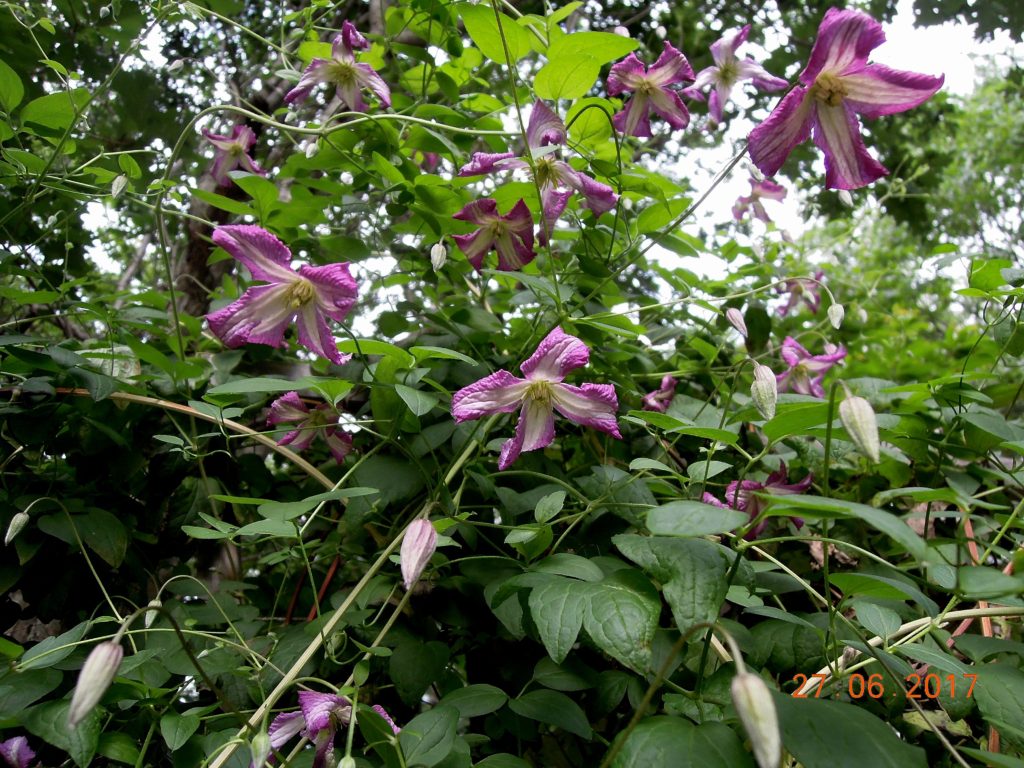Trouble in Paradise:
A pox on ticks!!!! Our gardens are harboring thousands of these blood-sucking vampires. It’s impossible to avoid them. My husband and I have already suffered 4 debilitating bouts of Lyme Disease. (And I shuddered when I read that in northern New England large numbers of moose have been killed by ticks.) Enough already. WE NEED A VACCINE!!!!
Our Oaks are also in need of help. A deadly fungal disease, Oak Wilt, is killing the trees by cutting off their supply of food and water. Last year the disease spread to six new locations in New York, including the East End of Long Island where I garden. The catastrophic loss of oaks would be devastating to our landscapes and to our wildlife. As yet, there is no cure, but there are preventive measures suggested by the New York Department of Environmental Conservation:
Oak Wilt is spread by insects, especially sap beetles, which are attracted to fresh tree wounds. Therefore, prune oaks between October and February — not during the sap-flowing growing season. And learn to identify the symptoms of Oak Wilt, which include discoloration around the leaf edge and a sudden, substantial loss of summer foliage. For more information, contact the DEC Forest Health office: 1-866-640-0652; or e-mail photos of tree symptoms to: foresthealth@dec.ny.gov
Pretty In Pink:
On to happier thoughts. The roses are in their glory, releasing intoxicating fragrance about the garden. I am partial to the disease-resistant Kordes roses, like the enchanting, multi-award-winning climber, Rosa ‘Jasmina’. We revel in her delicious perfume, which travels on the air all the way to our upper house deck — over 20 feet high. Photos below. (For more about the Kordes Nursery and roses see the post: “July 2014: Celebration of Roses.”)
I do grow and treasure one non-fragrant rose, another multi-award-winning Kordes beauty, Rosa ‘Larissa’. If you are looking for a repeat bloomer that is über hardy and disease-resistant (disease-free for me), and will flourish in a container, look no further. Albeit non-fragrant, I love Larissa’s small, densely-petaled, cotton-candy-pink flowers. Photo below. (Larissa is still in bud. Photo from last year.)
Speaking of a hardy, healthy, floriferous bloomer that will thrive in a container, consider Clematis ‘Minuet.’ This small-flowered viticella Clematis does not suffer from the dreaded Clematis Wilt which plagues large-flowered Clematis. A big plus. As a general rule, viticellas are extremely hardy and disease-resistant. And pruning is a piece of cake. Minuet blooms on new growth, so in early Spring I prune the old stems down to the ground. (I wait until there is no risk of frost because the old stems provide protection for the crown of the plant — and birds appreciate any remaining seeds.) In the wink of an eye, new stems emerge and the vine produces masses of charming, purple-pink edged white flowers. Photo below.
Note: In his 1597 Herball, John Gerard did caution gardeners about the viticella Clematis: “it climeth aloft,” he said, “and taketh hold with its crooked claspers upon everything that standeth nere unto it!” Ergo, keep to a safe distance.
Wishing you all a fabulous Fourth of July! a fabulous and.



